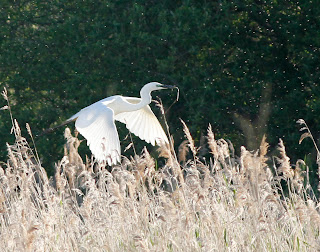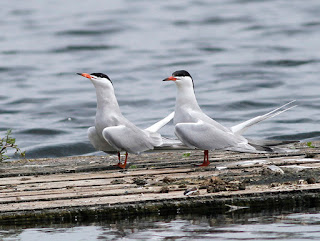The Avalon Marshes Partnership has released news of the breeding success of various species in the marshes this summer. These totals are testament to the skill, knowledge and effort put in to managing these sites by the RSPB, Natural England, Somerset Wildlife Trust and the Hawk and Owl Trust, they really do a superb job!
As mentioned on here previously, a pair of Little Bitterns raised at least 2 young at Ham Wall RSPB, and at least 3 male birds were seen on site. Hopefully, next year those birds will bring some more females back from their wintering grounds in Africa, and the species can really get established in the area.
The final tally for Marsh Harriers was 13 young fledged from 4 nests, an astonishingly high productivity rate. The total for Eurasian (or 'Big') Bitterns was 33 booming males, a fantastic high count, confirming the marshes as one of the species strongholds in Britain.
Perhaps the most welcome news though, was that 2 pairs of Great White Egret fledged 5 young between them (2 from Shapwick Heath NNR, and 3 from Ham Wall RSPB). It was a relief to see that last years breeding, the first ever in the UK wasn't just a one off, and the species is now well set to colonise Somerset, and hopefully spread out into the rest of the country.
I was fortunate enough to be involved with the protection and monitoring of one of the nests as a volunteer, during which time I was able to witness some fascinating behaviour and take a few photos.
 |
| Displaying bird |
 |
| A pair seeing of an intruder (centre bird) |
 |
| Adult in full breeding plumage |
 |
| Reeds being bought in during nest-building |
 |
| Intruder being seen off again one early morning |
 |
| Adults swapping over incubating duties |
 |
| Adult coming in for the first swap-over of the day one dawn |
All photos copyright Joe Cockram. Please contact me if you wish to use them in any way
























































